Sony A1 vs Canon R5 C vs Nikon Z8: Which Camera is Best for 8K Video?
In the last decade, 4K video recording has gone from a format only used in high-end productions to a feature found on even the most entry-level cameras and smartphones. It was inevitable that there would be another resolution bump as sensors and computing power improved, and now we have a number of compelling full-frame mirrorless cameras that can record 8K video internally (right to the memory card). We decided to compare the most compelling 8K-capable, full-frame mirrorless cameras to see which was your best option today: the Sony Alpha 1, Canon R5 C, and Nikon Z8.
This episode is brought to you by ViewSonic! Learn more about their 2023 ColorPro Awards here.
Why Would You Shoot in 8K?
But before we get into the comparison, what purpose does 8K video serve? There are very few screens capable of displaying the full resolution of these sensors — including most movie theaters. There’s not much demand either, as unlike the jump from 1080p to 4K, the resolution increase from 4K to 8K is less apparent on a 55-inch or 65-inch television from a standard viewing distance.
However, look at a display closer up, like on an office desk, and the image quality of 8K is stunning! But even if you don’t plan to deliver your video in 8K, capturing in 8K and exporting in 4K has real advantages for reframing and stabilizing your footage. 4K video is just over 8 megapixels per frame, and 8K video is a whopping 33 megapixels per frame, so that gives you huge flexibility when keyframing to eliminate camera shake, or find new compositions.
With that said, let’s take a look at a few different categories and see which of the three cameras performs best in each.
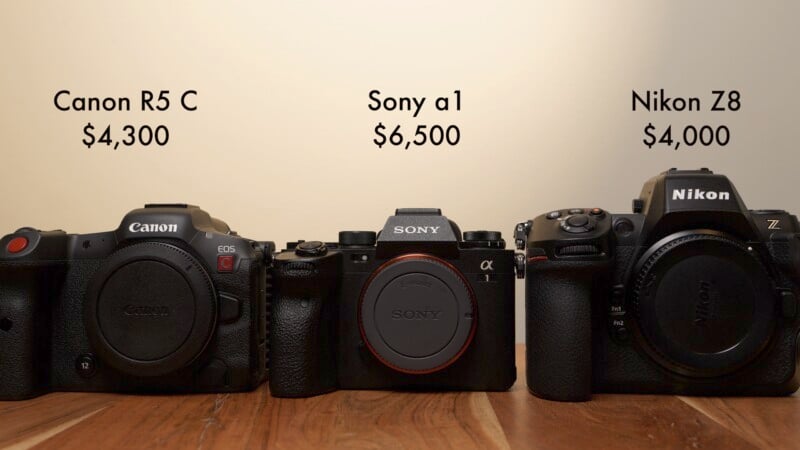
Handling
The Canon R5 C wins the handling category handily (no pun intended), as it is the only camera in our comparison with a fully articulated screen and offers incredibly comfortable ergonomics. What really sets it apart, though, is that it truly offers two shooting experiences depending on whether photo or video mode is selected.
Each custom button has two labeled functions for either mode and the entire interface changes depending on where the photo/video switch is placed. Select photo mode and you’ll see the familiar EOS R5 interface, but switch it to video and you’ll be greeted by Canon’s professional video interface and menus with features like waveforms, shutter angle, and focus punch-in while recording.
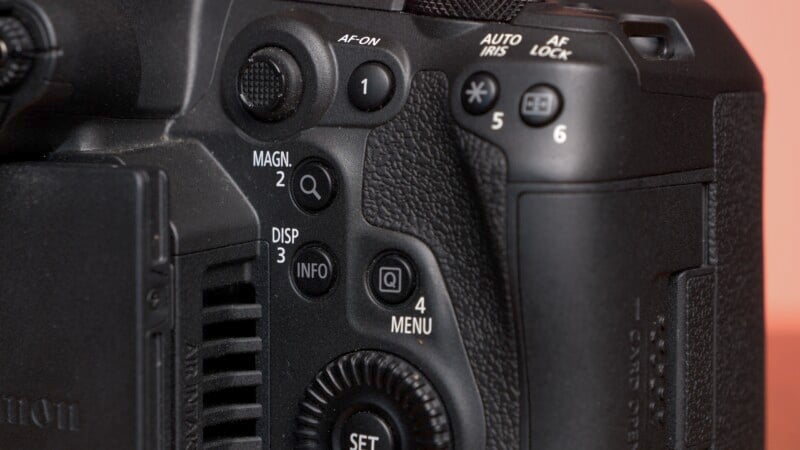
The Nikon Z8 has outstanding ergonomics but just missed out due to the LCD’s inability to face the presenter. The Sony Alpha 1 has a well-thought-out design, but I find it too small to balance properly when using larger video accessories.
Displays
Another well-deserved win for the Canon R5 C here. It’s incredibly important to have detailed displays to check your focus when recording 8K, and the Canon is the most well-rounded. The fully articulating 2.1M dot (1024 by 680 pixels) LCD is far superior to the Sony Alpha 1’s tilt-only 1.44 million dot panel, and the R5 C’s 5.76M dot (1,600 x 1,200) EVF makes it much easier to confirm focus than the Nikon Z8’s 3.69M dot EVF.
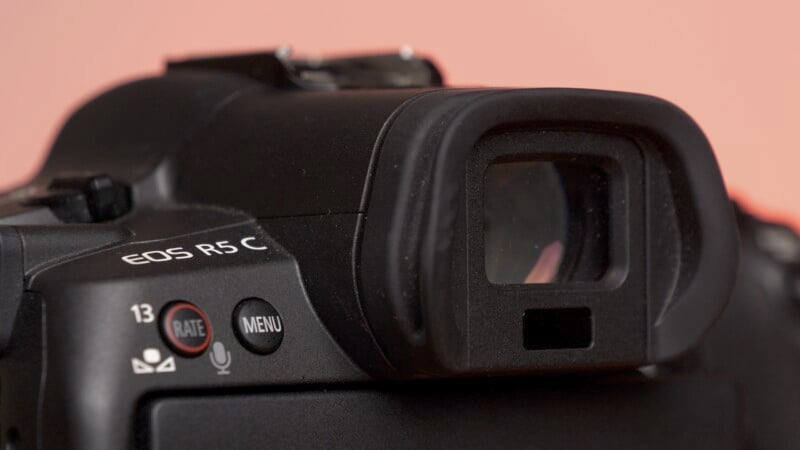
The Sony a1 has a brilliant 9.44M dot EVF, but its lackluster tilt of only 1.44M dot LCD held it back. Nikon’s nearly lag-free EVF is fantastic for photography, but not detailed enough for checking focus while recording 8K video.
Battery Life
The Sony Alpha 1 cleaned up in the battery life comparison. Recording 8K/24P at 10-bit 4:2:2, the little Alpha 1 was able to roll for an hour and 42 minutes before giving up the ghost. The Sony Z batteries have a reputation for tremendous battery life, and the Alpha 1 proves why that reputation is still warranted.
The Nikon Z8 recorded an hour and six minutes before shutting down, and the Canon R5 C only made it an embarrassing 31 minutes before conking out. You’ll want a lot of spare batteries for the Canon.
Autofocus
More frequently, video professionals are trusting their cameras to autofocus during video as the reliability has improved enormously in the last five years. Despite being the oldest of the three cameras, the Sony Alpha 1 was by far the most consistent video autofocus performance.
Even though it was released before Sony started including a separate “AI” processor, it easily maintained focus on even fast-moving subjects. I do hate that you need to take your eye off the EVF and tap the touch screen to initiate tracking, and this is something Sony has fixed with its most recent models, but the Alpha 1 has been left without this feature and hasn’t gotten it via a firmware update.

The Nikon has very good tracking autofocus in video, but it can occasionally be confused, especially in inclement weather. The Canon R5 C was by far the most inconsistent performer, rarely maintaining focus while I was filming my son riding his bike, and sometimes losing focus even on a static subject.
10-Bit Internal Recording
I couldn’t pick a winner between the Z8 and Alpha 1 here as both offer an excellent, flexible log profile (N-Log and S-Log 3, respectively), and solid low-contrast profiles for easier color grading. File sizes on both these cameras are surprisingly manageable, and I honestly would be fine using internal 10-bit as opposed to Raw video with either option. Just be aware that you’ll need powerful computer hardware to easily process these files. My Macbook Pro with an M1 Pro chip and 16GB of RAM wasn’t enough, so I had to borrow a new Macbook Pro with an M2 Max and 64GB of RAM to make 8K editing seamless.
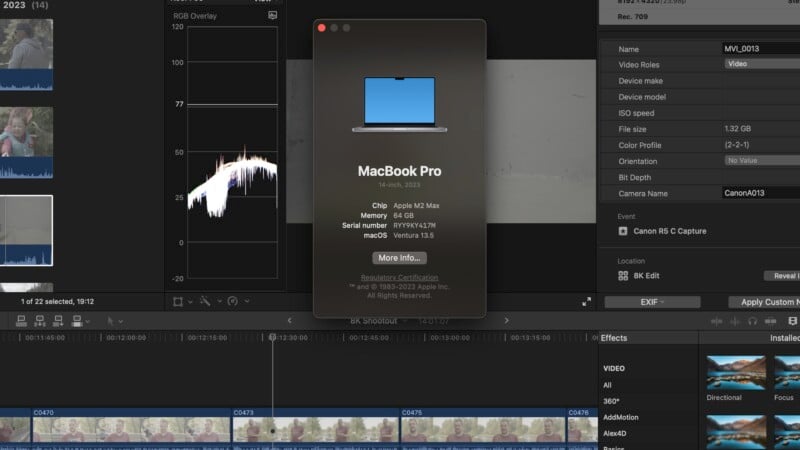
Canon’s profile for 10-bit recording is their C-Log 3 profile, which I’m not a big fan of. Dynamic range is more limited than the other two cameras, and I struggle to get nice skin tones out of it in mixed lighting. The R5 C’s RAW video shows there is plenty of information captured that the C-Log 3 profile is not taking advantage of. Speaking of RAW video…
RAW Video Recording
Canon is the winner here with lower data rates than the Nikon but still with excellent quality. When testing Canon’s “Light” version of the company’s RAW video codec, we saw no perceptible quality loss and a huge reduction in file sizes. Since I’m not a huge fan of the R5 C’s internal 10-bit C-Log 3 profile, I could see using RAW video all the time for the big image quality upgrade and (relatively) manageable file sizes.
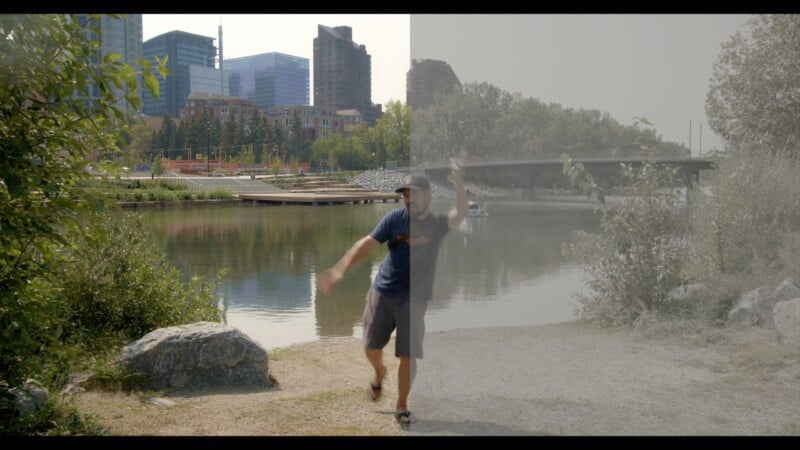
Which Reigns Supreme?
With these rankings, the Sony Alpha 1 came out just slightly ahead, and it is a perfect option when you want 8K capture with great autofocus in a small body. However, it’s the most expensive option.
The Nikon Z8 and Canon R5 C tied, but both serve different types of users. The Nikon Z8 is a great all-rounder that could tackle commercial work, documentaries, and content creation. The Canon would be much more at home on a film set or advertising work where the large RAW video file sizes and lack of IBIS would not be an impediment.
These are all great cameras, and hopefully, this article will help you decide which is right for you, and make sure to watch the video above for more detailed explanations of each category and our final conclusion.